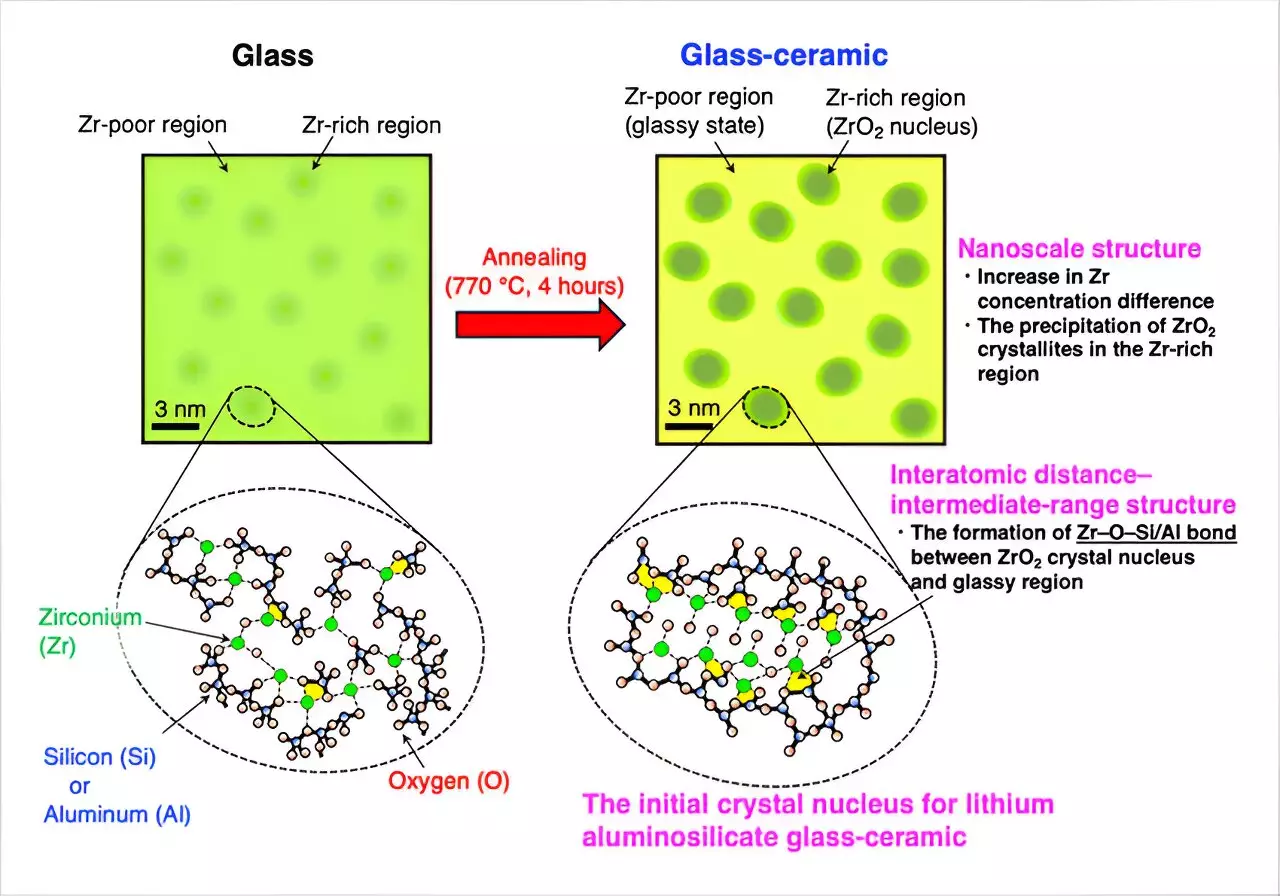In an exciting development within material science, a collaborative research endeavor involving National Institute for Materials Science (NIMS), AGC Inc., and Japan Synchrotron Radiation Research Institute (JASRI) has shed light on the transformative process of glass into a more resilient glass-ceramic. This form of glass-ceramic is not only sturdier but also exhibits remarkable heat resistance, making it perfect for a variety of applications. Published in the esteemed journal NPG Asia Materials, this study delivers profound insights into the initial stages of crystallization that are often overlooked in traditional discussions of glass formation.
The research team’s approach is commendable for its multi-layered analysis that utilized synchrotron X-rays, allowing scientists to observe crystal nucleation processes at varying spatial scales. This innovative method represents a significant leap in our understanding of the relationship between a material’s microscopic structure and its macroscopic properties. As glass transitions into a glass-ceramic, the formation of crystal nuclei—which serve as the fundamental building blocks for crystals—must be meticulously documented to optimize the synthesis process.
Understanding the Mechanics of Crystallization
One of the groundbreaking aspects of this research lies in its ability to distill a complex crystallization phenomenon into a coherent and comprehensive model. Prior to this study, the mechanisms of crystal nucleation and growth during glass transformation were subjects shrouded in ambiguity. The investigation targeted zirconium oxide (ZrO2)-doped lithium aluminosilicate glasses, widely regarded in practical applications for their impressive qualities. The findings reveal that heat treatment catalyzes differences in zirconium concentration, initiating the formation of nanoscale crystal nuclei within Zr-rich regions of the glass.
Moreover, the team uncovered Zr–O–Si/Al bonds surrounding the crystal nuclei for the first time. This pivotal discovery not only elucidates the configuration of these nascent crystal structures but also showcases the intricate dance between various molecular components. This bond network is vital as it significantly informs us about how inherent atomic arrangements can influence the mechanical and thermal properties of glass-ceramics.
Implications for Future Material Development
The implications of this research extend far beyond mere academic curiosity. The advanced structural analysis techniques employed here have expansive applications in real-world scenarios, allowing for the investigation of complex materials with non-ideal atomic configurations. As the team aims to further explore how these methods can unveil unique properties in other practical materials, the potential for innovation is staggering.
With the insights offered by this research, we stand on the cusp of revolutionizing material synthesis techniques. The ability to deliberately manipulate crystal nucleation within glass-ceramics provides a pathway toward developing new functional materials that could possess tailored characteristics suited for ever-evolving technological needs. As industries continue to demand higher-performing materials, findings like these hold the promise of a brighter, more resilient future— one where science and engineering converge to produce materials that not only meet human needs but also push the boundaries of what is possible.


Leave a Reply